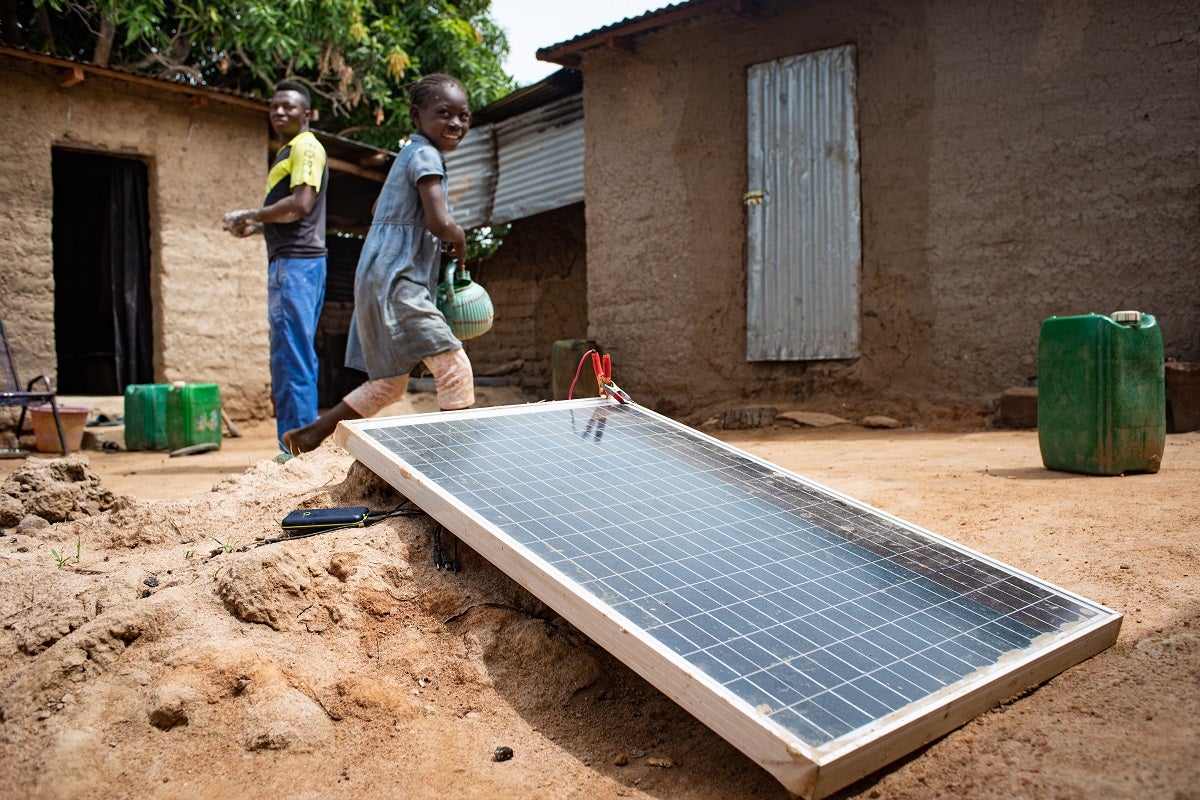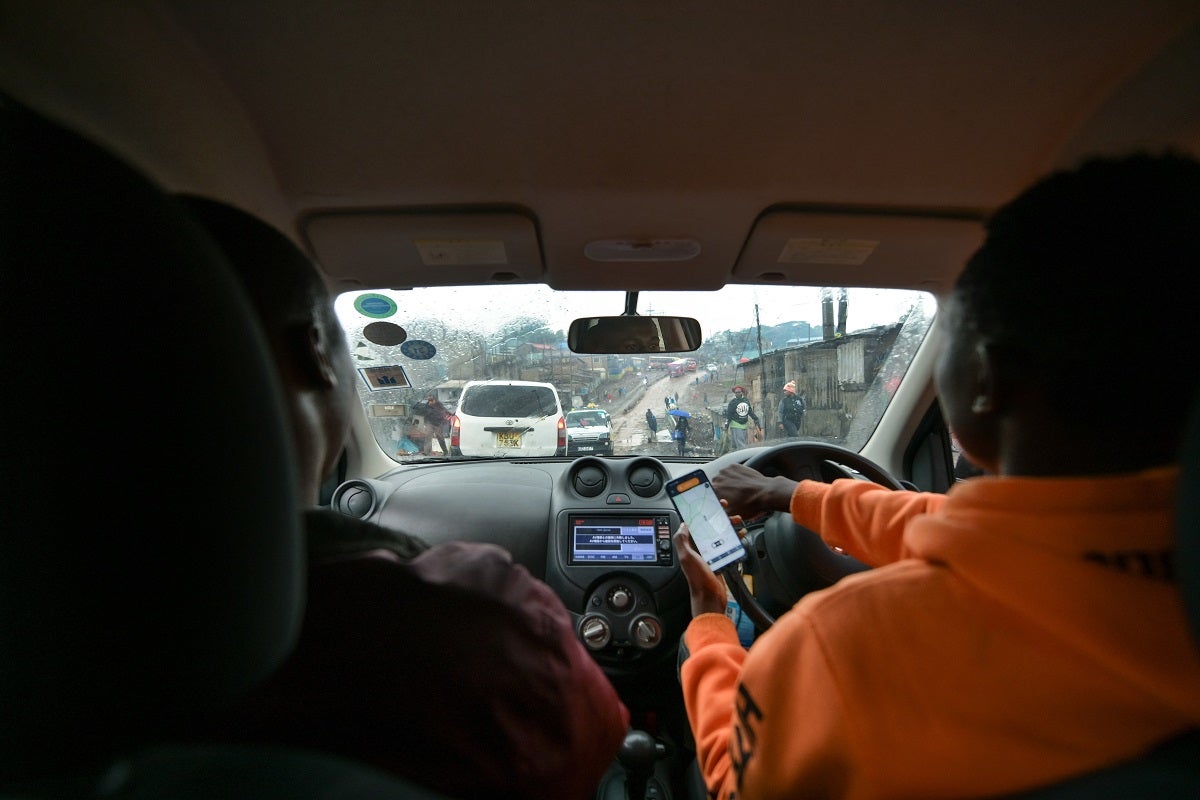Inclusive Finance Can Help the World Achieve COP26 Goals – Here’s How
At this year’s UN Climate Change Conference (COP26), global leaders, development funders and advocacy bodies must identify and commit to clear actions toward achieving the goals of the Paris Agreement and the UN Framework Convention on Climate Change.

The UK Presidency at COP26, headed by Alok Sharma, has outlined its five priority action areas for this year’s conference, with the objective of spurring new alliances and faster progress on global climate goals. As world leaders gather to discuss implementation strategies, it is important for the international development community to focus on how the proposed actions will impact the lives and livelihoods of low-income populations, especially in lower- and middle-income countries.
Amidst all the talk of national climate plans, net zero timelines, losses and damage, and the Paris rulebook, we should not forget about the need to scale-up practical tools that enable low-income populations to participate in the climate transition. Otherwise, we risk leaving them behind as victims of both the physical impact of climate change and the global climate transition. Here’s how:
Priority 1 | Adaptation and resilience: “Helping people, economies and the environment adapt and prepare for the impacts of climate change”
Low-income populations are particularly susceptible to the negative effects of climate change due to their high exposure and vulnerability to climate shocks. They often live in areas with weak infrastructure and less resilient housing, which makes them more likely than higher-income groups to lose access to essential services and shelter in a natural disaster. And because low-income populations often lack access to formal and informal safety nets, they have fewer means to cope with and recover from shocks. An estimated 21 million people fall into poverty annually due to increasingly severe floods and droughts.
The global development community has identified a host of solutions to support low-income populations at the different stages of climate change adaptation (i.e., anticipation, preparation and response). These include tools to forecast, monitor, model and warn about potential threats; technology to climate-proof homes and infrastructure, or to help agricultural and coastal communities adapt their livelihoods; and social safety nets, rebuilding efforts, and asset and livelihood replacement programs. However, low-income populations often live in remote areas and have limited access to the information, technology and public services required to access these types of solutions.
Inclusive financial services can help more people, especially the poor, to benefit from these adaptation solutions. Insurance is an obvious example that can protect people’s assets and help them to respond and recover from shocks. For instance, Pula offers innovative area-yield index insurance and replanting guarantees to smallholder farmers as an add-on when they purchase inputs like fertilizer. The insurance gives farmers the confidence they need to invest in their farms by protecting them from hazards. Savings and loans can also promote resilience by enabling people to invest in climate proofing their homes or accessing climate-smart technologies for their businesses.
Priority 2 | Safeguarding nature: “Safeguarding ecosystems, protecting natural habitats and keeping carbon out of the atmosphere”

Protecting and restoring ecosystems will be critical to the well-being of the 2.6 billion people whose livelihoods depend on agriculture and other natural ecosystems. In many places, agriculture is responsible for land degradation, but this can be reversed by introducing agricultural practices that protect natural ecosystems and improve the ability of soil to sequester carbon. Intensification practices for smallholders, such as intercropping, agroecological pest management and crop diversification, can increase yields while reducing demand for land. This could have the dual benefits of reducing carbon emissions by up to 1.4 gigatons by 2050, while earning smallholders net profits of over $300 billion.
Smallholder farmers and rural communities will require a combination of technical training, technology, market linkages and financial incentives to adopt these solutions. Innovations in asset finance allow low-income farmers to access technology and information for more climate-smart farming practices. For example, SunCulture leases solar water pumps through a rent-to-own business model. Additionally, the company trains its borrowers and guides them on how much to irrigate based on information collected through weather and soil sensors. This solution helps farmers to economize water and power consumption while increasing crop quality and consistency, which ultimately makes the farmers more competitive. Inclusive financial services can also be used to encourage and reward communities that protect natural habitats. For protecting over 1,000 acres of rainforest and reforesting degraded land, the Ticuna community in Peru is compensated via digital payments into a communal bank account.
Priority 3 | Low-carbon energy transition: “Seizing the massive opportunities of cheaper renewables and storage”
To achieve a “just transition” in the energy sector, we need to meet the energy needs of low-income populations in terms of both consumption and livelihoods.
On the consumption side, 759 million people still lack access to energy. Four billion people are without clean cooking solutions and must rely on unsustainable sources of energy like charcoal and kerosene. As the cost of solar and onshore wind energy declines, and as off-grid technologies improve, there is an opportunity to extend affordable and clean energy services to low-income populations. Over the past decade, the number of people connected to decentralized, renewable energy solutions has more than doubled, growing from 5 million to 11 million.
From a livelihoods and economic growth perspective, less expensive and distributed clean energy such as rooftop solar solutions can support the growth of micro, small, and medium enterprises (MSMEs). Because electricity accounts for a significant portion of these businesses’ operating expenses, better energy access can spur productivity and job creation. Women, in particular, benefit from accessing clean sources of energy, such as biogas digesters for cooking or solar-powered water pumps for irrigation, because it saves women time and fuel, and thereby increases their returns to labor and access to markets.
Pay-as-you-go (PAYGO) and other inclusive asset financing solutions play an important role in expanding low-income households’ and MSMEs’ access to energy. In Africa, M-KOPA was one of the first off-grid solar companies to offer PAYGo financing. Today, it sells not only solar home systems, but also TVs, refrigerators and other assets that can run on solar energy. In Bihar, India, financial institutions extend loans to communities so that they can acquire solar mini-grids capable of powering up to 50 households. To collect money for loan repayment, the communities establish informal energy cooperatives that charge an energy usage fee.
Priority 4 | Low-carbon transportation transition: “Accelerating the move to zero-carbon road transport”

Beyond decarbonizing existing, large-scale transportation infrastructure, there is a need to expand sustainable mobility solutions for the 1 billion people who lack transport in rural and urban areas. Transportation services like ride-hailing, car-sharing and private buses are operated by microentrepreneurs and often used by lower-income groups. It will take significant investment — up to $250 billion per year — to grow and transition to low-carbon and electric vehicles.
Financial services can enable low-income populations to participate in this transition. For example, SMV Green Solutions is pioneering e-rickshaw ownership in India. The company has helped 1,800 rickshaw drivers to switch to e-rickshaws through a suite of services including rickshaw sales, asset financing and a pay-per-use battery swap service that enables drivers to avoid long charging times. The formal financing provided by SMV Green Solutions brings rickshaw drivers out of the informal system and affords them protections like vehicle registration, insurance and licensing.
Priority 5 | Scaling up climate finance: “We need to unleash the finance which will make all of this possible and power the shift to a zero-carbon economy”
Climate finance is one of the key building blocks of the four priorities above, but it is often discussed only at a macro level in terms of public finance, development budgets or project finance for large infrastructure investments. Funders also need to consider the impact that green investments have on the poor and ensure projects don’t harm local communities’ livelihoods. Inclusive financial markets enable climate finance to reach low-income populations and help them prepare for and participate in the transition proposed in the COP26 priority areas.
Unfortunately, access to relevant financial services is still limited, especially for those 1.7 billion adults who remain unbanked. As funders scale up climate finance, they should not only invest at the macro level. They should also use their financial and non-financial instruments to help build market systems that enable low-income populations to access and use innovative financial services for climate change adaptation and mitigation. In the coming months, CGAP will lead an exchange among funders and other relevant stakeholders on effective ways to supporting inclusive financial market systems for achieving climate outcomes for the poor.




Add new comment